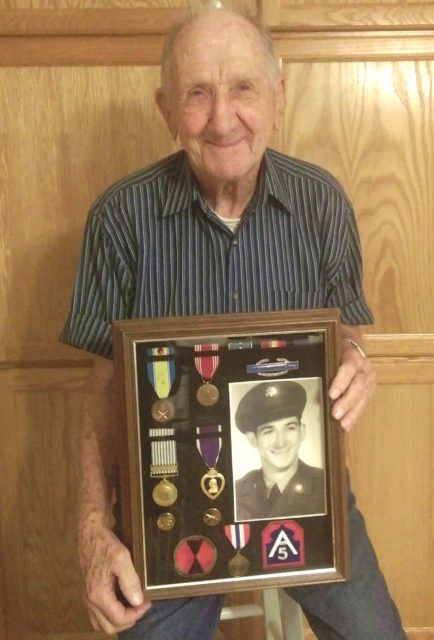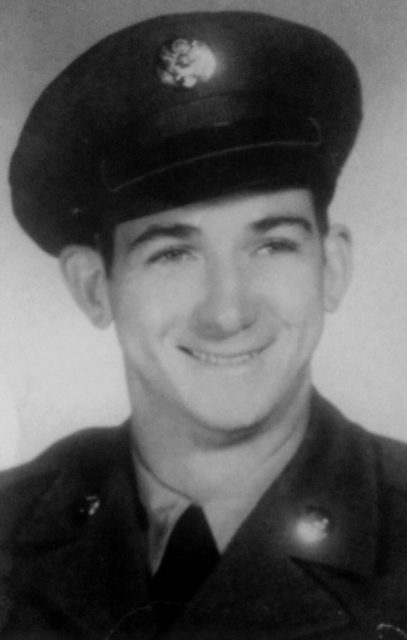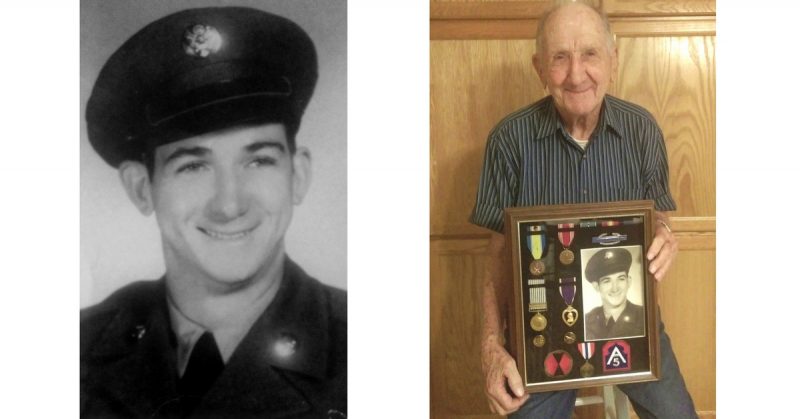War History online proudly presents this Guest Piece from Jeremy P. Ämick, who is a military historian and writes on behalf of the Silver Star Families of America.
When describing his service to the nation during the Korean War, Charles Bestgen emits a jovial personality that belies the many hardships, losses and injuries that he has both witnessed and experienced during his time spent overseas.
Born in 1930, Bestgen was raised in the Moniteau County community of California, Mo., in a family possessing a respectable legacy of military service—his father was a veteran of World War I and his two older brothers served during the Second World War.
After graduating high school in 1949, a 19-year old Bestgen went to work for California Manufacturing Company. He soon settled into his post-high school life but the draft notice he received in October 1951 interrupted whatever plans he had made for his future.
“It wasn’t too much of a shock to me,” said Bestgen, while discussing the receipt of his draft notice. “I wasn’t the only one that got one,” he added with a smile.
Several days later, the young inductee arrived at Fort Ord, Calif., where he underwent a 16-week regimen of intense infantry training that transformed him into a soldier and rifleman for the U.S. Army.
“It didn’t get real cold (at Fort Ord) but there were some mornings when there was ice on the ground,” he said. “The ice didn’t last long and then it got so hot you couldn’t stand it. I guess that’s California for you!” Bestgen chuckled.

After completing his training in February 1952, the soldier came home for two weeks of leave and then returned to California to board a troopship bound for service overseas. Arriving in Inchon Bay, Korea, he was soon assigned as a rifleman to Company A, 32nd Infantry Regiment of the 7th Infantry Division.
As Bestgen explained, although he was given an M-1 rifle when arriving in country, he was soon assigned an air-cooled .30 caliber machine gun to use in defensive emplacements and later while participating as a member of combat patrols.

“You could really put a lot of lead out with that machine gun,” the veteran affirmed. “I think I walked all over Korea packing that thing,” he grinned.
Bestgen recalls beginning a cycle of “living on the front lines in bunkers” for 30 days at a time followed by a return to their base camp for 30 days. However, he further explained, this cycle was soon interrupted when during the month of July 1952, he and his company began frequent combat patrol in the evenings.
“We went out many a night and I don’t see how we did it,” he said. “On one patrol, we had a guy get his arm blown off by a burp gun (a 7.62mm Soviet weapon)—those things would just tear you up.” He solemnly added, “He died before we were able to get him back to camp.”
Bestgen considered himself “lucky” since he was frequently fired upon by enemy soldiers yet never wounded. His providence soon expired when his company received orders to join other elements of the first battalion in attacking and securing ridges known as Jane Russell Hill and Sandy Ridge during the Battle of Triangle Hill on October 15, 1952.
While fighting under conditions that required close quarters combat near trenches and slopes filled with Chinese and North Korean troops, Bestgen was proceeding toward the company’s objective when an artillery shell from an enemy barrage landed behind him and exploded.
“I ended up with shrapnel wounds to my left leg,” he said. “They evacuated me to an aid station and removed some pieces of the shrapnel out of my leg but I was eventually sent to the United States for several surgeries,” he added.
In the end, Bestgen recalls, he was sent to the hospital at Camp Atterbury Ind., where he underwent an estimated four surgeries, some of which included skin grafts. On April 11, 1953, while still recovering from his treatments, the soldier married his fiancée, Margaret Ann, whom he had met before the war. After spending more than eight months in the hospital, he was discharged on July 24, 1953.
The combat veteran returned to his Mid-Missouri home where he and his wife went on to raise four children. After the war, he returned to his previous employment with California Manufacturing and retired after nearly forty years of service to the company.
In 2012, Bestgen received the unexpected and memorable opportunity to travel to Washington, D.C., to see the nation’s war memorials—including the Korean War Memorial—as part of the Central Missouri Honor Flight
The decades have passed and the Korean War has become little more than an ancient memory to many, thus highlighting its distinction as the “Forgotten War.” Despite its fading remnants, the veteran affirms that remembering his time in combat and the soldiers with whom he served are experiences that will never fade from his reflections.
“Yes, the ‘Forgotten War’—that is more or less what it’s become,” he somberly noted. “It’s truly a shame that a lot of people don’t know anything about the war … all of those brave men that gave up their lives.”
He briskly concluded, “I know the costs; I was there and will never forget.”
